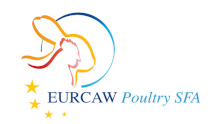Document type: Scientific review published in Animals
Author: Lauren R. Finka
Preview: Sociality can be broadly defined as the ability and tendency of individuals to reside in social groups with either conspecifics and/or other species. More specifically, sociability relates to the ability and tendency of individuals to display affiliative behaviours in such contexts. The domestic cat is one of the most globally popular companion animals and occupies a diverse range of lifestyles. Despite an arguably short period of domestication from an asocial progenitor, the domestic cat demonstrates an impressive capacity for both intra- and interspecific sociality and sociability. At the same time, however, large populations of domestic cats maintain various degrees of behavioural and reproductive autonomy and are capable of occupying solitary lifestyles away from humans and/or conspecifics. Within social groups, individuals can also vary in their tendency to engage in both affiliative and agonistic interactions, and this interindividual variation is present within free-living populations as well as those managed in confined environments by humans. Considerable scientific enquiry has focused on cats' social behaviour towards humans (and conspecifics to a much lesser extent) in this latter context. Ontogeny and human selection, in addition to a range of proximate factors including social and environmental parameters and individual cat and human characteristics, have been highlighted as important moderators of cats' sociability. Such factors may have important consequences regarding individuals' adaptability to the diverse range of lifestyles that they may occupy. Where limitations to individuals' social capacities do not enable sufficient adaption, compromises to their wellbeing may occur. This is most pertinent for cats managed by humans, given that the physical and social parameters of the cats' environment are primarily dictated by people, but that positive human-selection for traits that enhance cats' adaptability to such lifestyles appears to be limited. However, limitations in the availability and quality of evidence and equivocal findings may impede the current understanding of the role of certain factors in relation to cat sociability and associations with cat wellbeing, although such literature gaps also present important opportunities for further study. This review aims to summarise what is currently known about the various factors that may influence domestic cats' sociality and sociability towards both humans and conspecifics, with a predominant focus on cats managed by humans in confined environments. Current limitations, knowledge gaps, and implications for cat wellbeing are also discussed.




